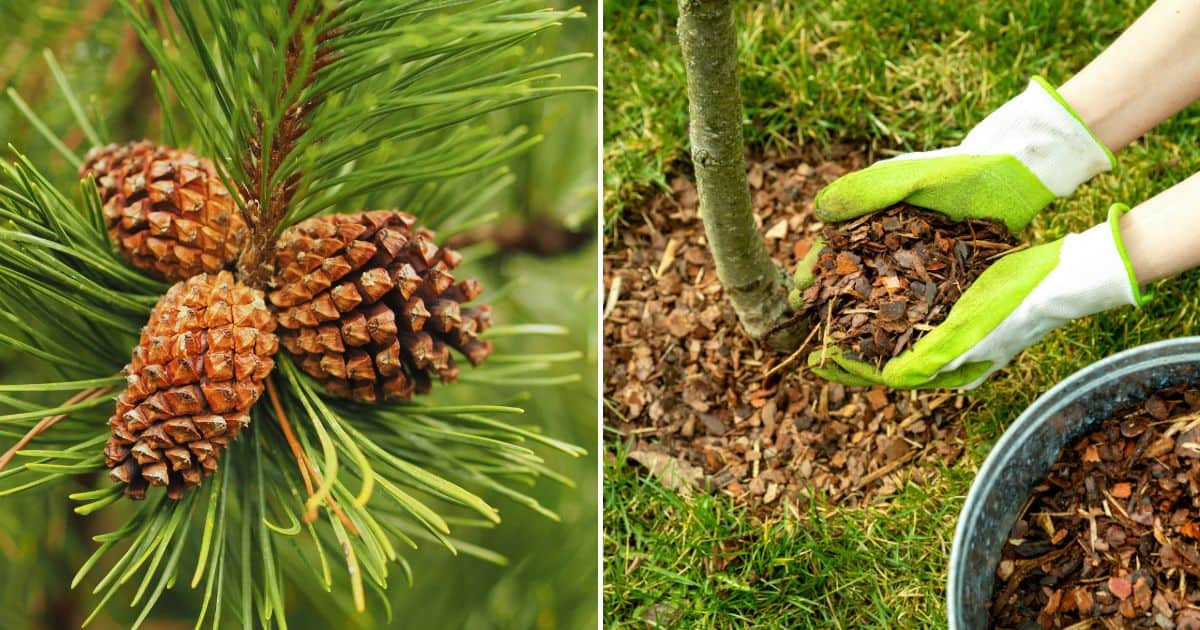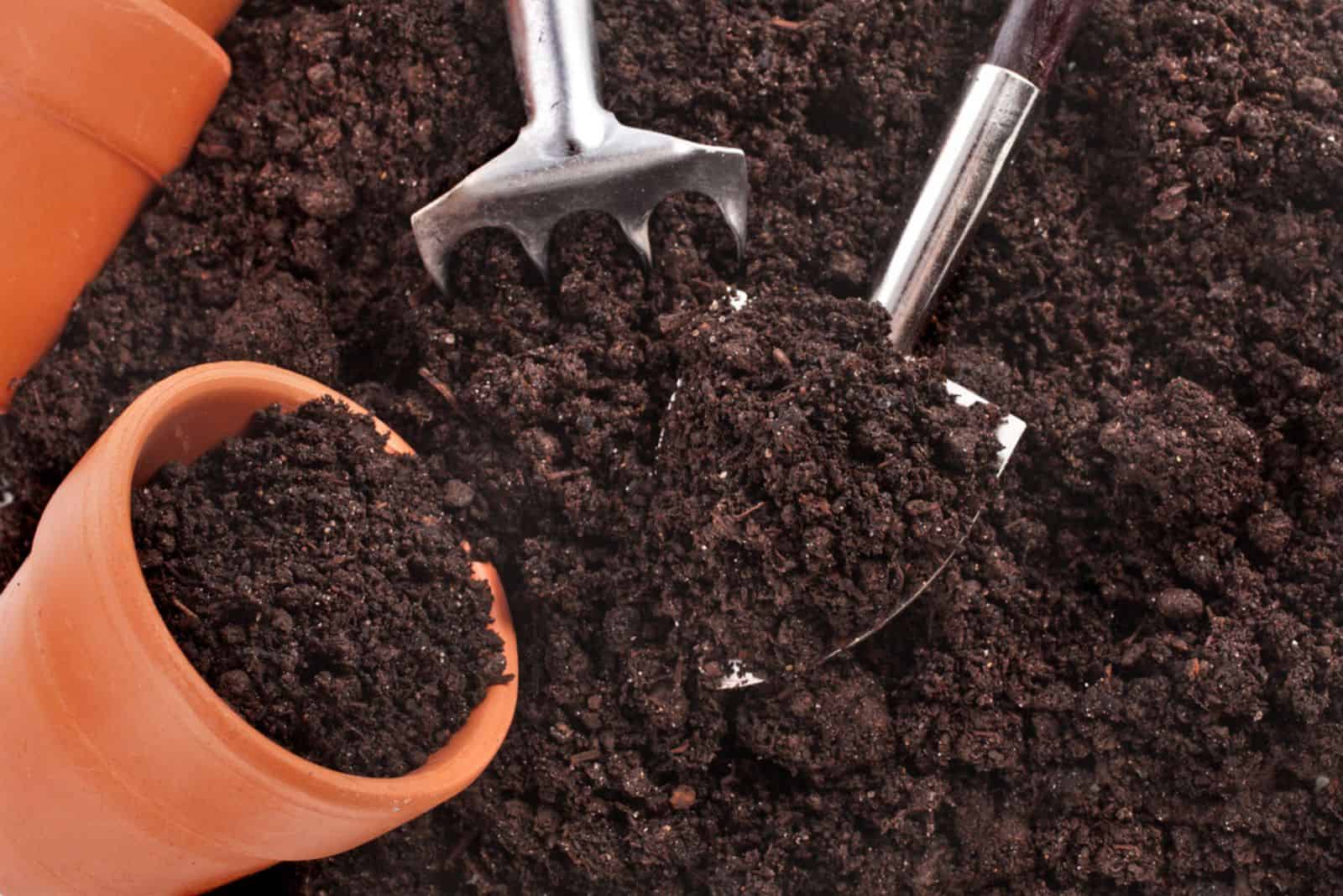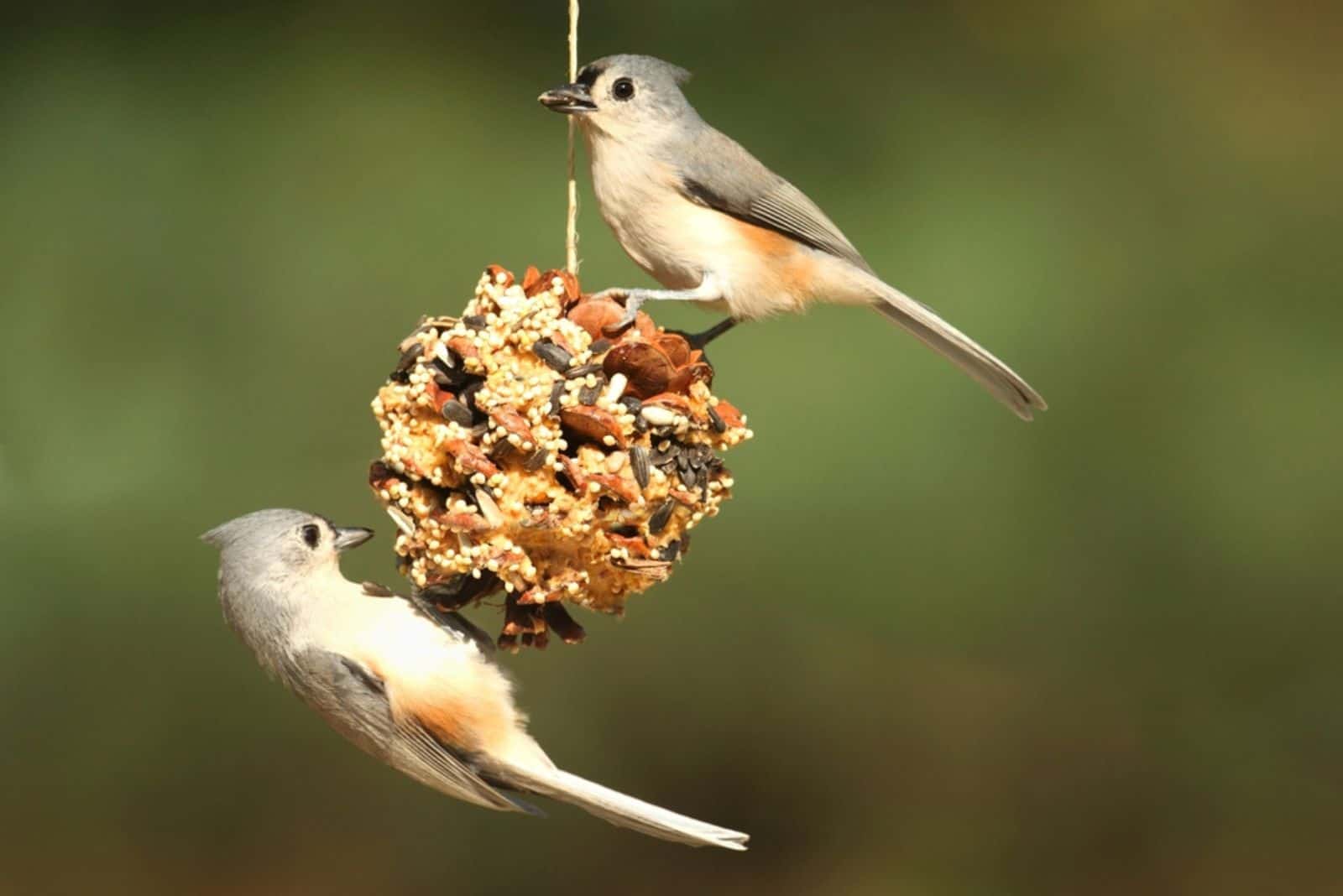We often associate pine cones with the holiday season, but did you know that these little woody seeds can also be used in your garden?
Depending on the conifer tree of origin, pine cones can come in different shapes and sizes, all of which can be of good use in the garden – from adding texture and interest to your landscape to helping your plants thrive.
In this article, we are going to explore some creative ways to use pine cones in your garden so you can make the most of this abundant and renewable resource.
Let’s dive right in!
1. Fill Your Pots & Containers
If you are into big maximalist pots and containers, then filling them with high-quality soil can be quite expensive. The majority of plants won’t even reach the bottom of the container, which is why it is completely unnecessary to fill them entirely with soil.
Luckily, there are other options you can choose to fill out those deep pots and containers. For instance, you can use bottles, rocks, tin cans, or even pine cones.
One of the benefits of using pine cones in the garden is that they are a lightweight material, making them an ideal option if you need to move your pots around.
Unlike heavier materials such as rocks or bricks, pine cones won’t add extra weight to your containers, which makes them easier to transport.
What’s also great is that pine cones are slow decomposers. Pine cones will last over time and won’t need as much maintenance as other organic materials like leaves or grass clippings, which can degrade quickly and need to be replenished frequently.
2. Mulch Your Pine Cones
Mulch has numerous benefits in the garden: it can prevent weed growth, improve soil fertility, keep the soil temperature cool, and aid with moisture retention. It is usually added about 2 or 3 inches deep and needs to be reapplied every one to two years.
This all sounds great, but if you have a large garden, then mulching can really cost you a lot. However, there are other options that you can use to save some bucks and still have nice and healthy plants.
Materials like grass clippings, leaf mold, compost, pine bark, chopped leaves, wood chips, pine needles, and pine cones are all readily available materials that can be used as mulch.
Pine cones in particular are a great option due to their durability and natural resistance to mold and fungus.
Pine cones play a crucial role in the distribution of conifer tree seeds in the environment. They can remain on the ground for years and reproduce by opening their scales to release the seeds during dry seasons, then closing them when wet.
To use pine cones as mulch, you can either keep them whole or break them up by processing them with a wood chipper or lawnmower. You can also just beat them with the back of a shovel a few times to break them up into smaller bits.
Pine cones are relatively acidic, so it’s crucial to keep that in mind when using them around acid-loving plants. Alternatively, you can sprinkle some baking soda on the ground before using pine cones as mulch around other plants to help balance the pH of the soil.
3. Add Pine Cones To Compost
Adding pine cones to your compost pile is a smart way of introducing an additional source of carbon or “browns”. When fully broken down, their main ingredients – ash, lignans, and tannins – will significantly improve your compost.
In this case, you will need to cut them into smaller pieces before adding them to the pile. This is done to speed up the decomposition process. We don’t do this when using pine cones for mulch because slow decomposition is required in this case.
The smaller the pine cone pieces, the faster they will compost, so it’s best to use a chipper or shredder to create a fine sawdust-like consistency. This technique will yield the quickest composting results and help maximize the nutrient value of your compost.
4. Build A Tiny Hotel For Ladybugs
You can look at a garden like its own miniature universe – bursting with life and buzzing with a robust population of insects. And in this world there are the good guys and the bad guys. You will have to do everything in your power to have more of the good in your garden!
Beneficial insects in the garden will tirelessly pollinate your plants and prey on garden pests. Best of all, by letting nature do its work, you can avoid using harmful pesticides and chemicals.
One of the best insects that you can have in the garden are ladybugs. While their cute and tiny appearance might be deceptive, ladybugs are voracious predators that can consume over 50 aphids, mites, white flies, or scale insects each day!
By using several pine cones, twine, chicken wire or netting, a multi-insect home can be created. Hang it next to your plants in a spot that is protected from strong winds and rain to give the ladybugs a place to rest after a hard day’s work protecting your garden!
Another option is to put a planter on the wall and fill it with pine cones to provide ladybugs and other beneficial insects with a nice home.
5. Upcycle Pine Cones To Create A Bird Feeder
There is truly nothing more enjoyable than the sound of bird song in the morning. And you can have that every morning if you attract some lovely birds into your garden!
These feathered friends not only delight us with their songs and colors, but also provide us with free pest control. By devouring caterpillars, grubs, mosquitoes, and beetles, birds help to keep your garden healthy and thriving.
Moreover, they often eat the seeds of weeds and other unwanted plants in the garden, and also serve as a weed preventative measure, which ultimately means less work for you.
The best way to attract birds into your garden is by providing them with food and water. If you have pine cones laying around, you can try and make a bird feeder. While any pine cone will work, a large, round, and wide one will provide the best surface area.
Make room for food by removing some of the pine cone’s scales. Roll the pine cone in your preferred bird seed mixture after coating it in peanut butter or suet. Finally, hang it on the bough of a tree by tying it with twine or a fancy ribbon.
You will be amazed at how quickly the birds will fly into your garden and provide natural pest control, all while adding a touch of beauty to your outdoor space.
Until next time!




